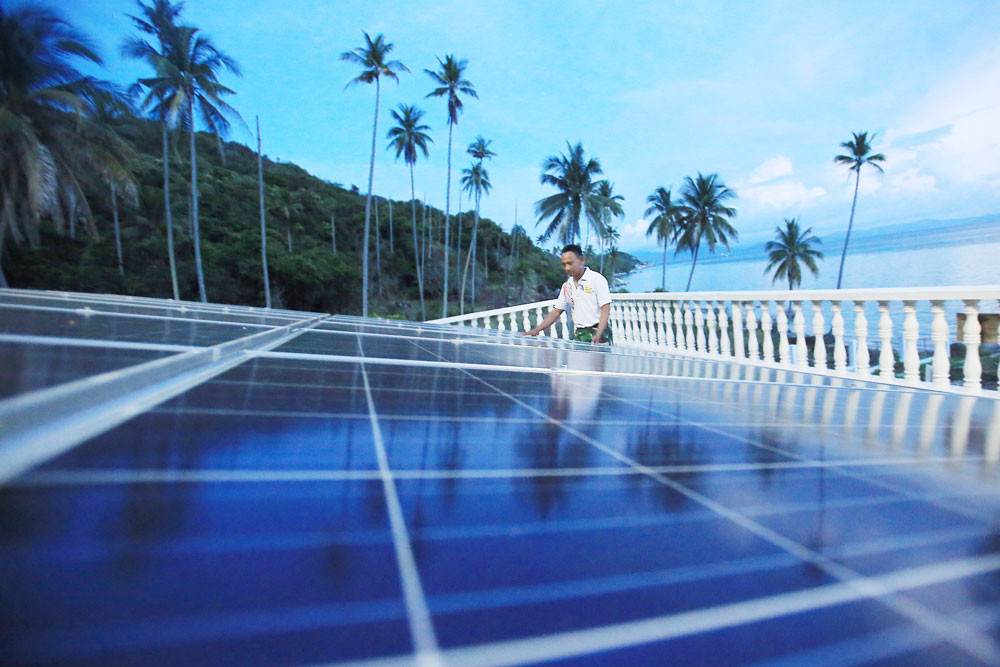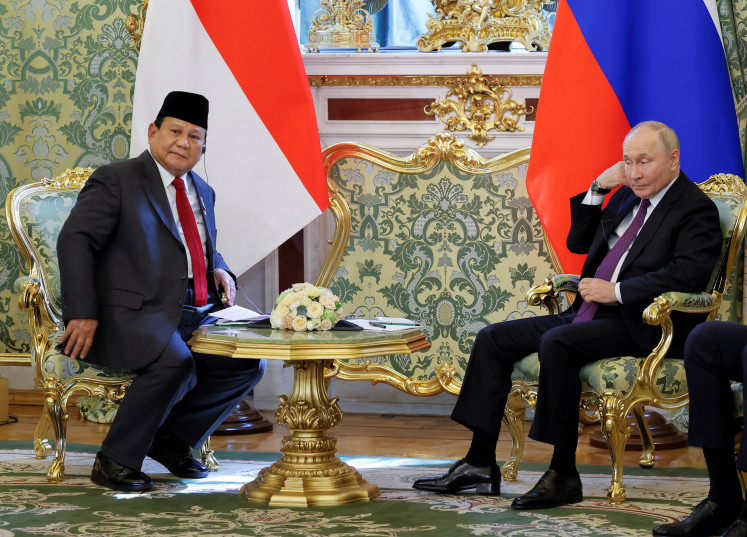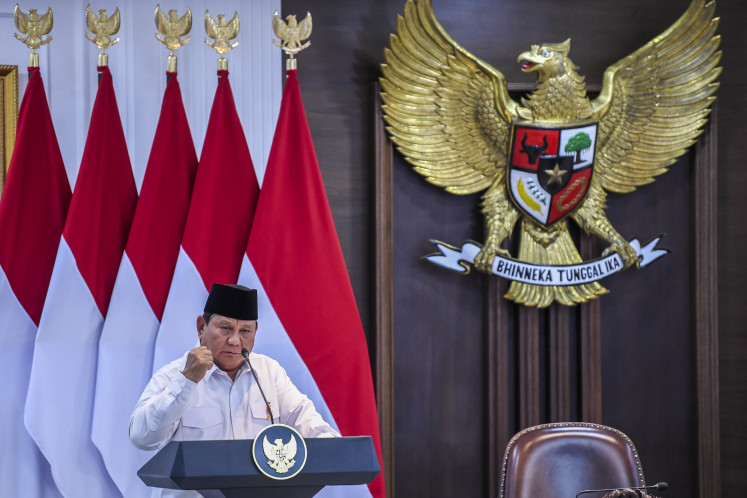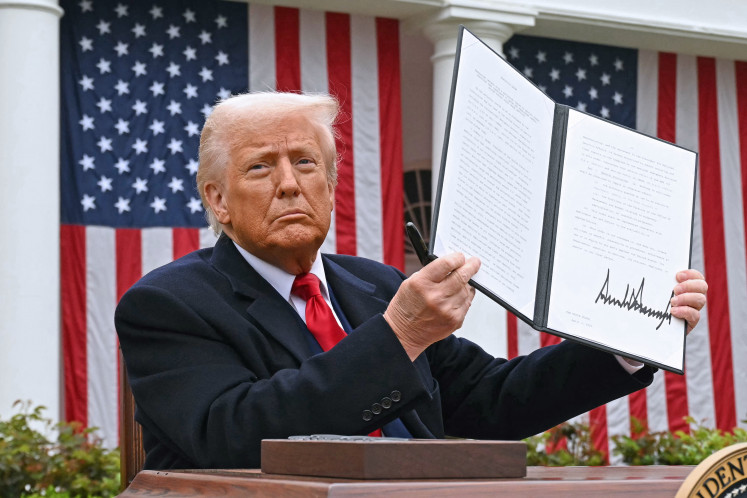What IPCC report means to Indonesia: Time to step up
To get there, Indonesia should focus on four things: renewable energy, coal phase-out, electrification and clean fuel.
Change text size
Gift Premium Articles
to Anyone

“It is unequivocal that human influence has warmed the atmosphere, ocean and land,” says the Intergovernmental Panel on Climate Change (IPCC) in its sixth assessment report, "Climate Change 2021: The Physical Science Basis", released on Monday. The bombshell report — drawn on from more than 14,000 scientific studies — confirms the long-standing view that humans are unequivocally to blame for dangerous climate change impacts such as heatwaves and rising sea levels.
The report was described as a "code red" for humanity by United Nations Secretary-General Antonio Guterres due to its grim prediction that extreme weather events will only increase in frequency and intensity if humanity fails to curb greenhouse gas emissions significantly in the coming decades.
Such a forecast is not an exaggeration. In recent months, the world has watched in horror as heatwaves roasted North America, flash floods lashed Western Europe and China, wildfires rage in California, Greece, Italy, and Turkey, and climate change-caused famine hit Madagascar.
The extreme weather events that happened around the world should serve as a reminder for all of us that climate change is not only real but also consequential. Thus, we need to take it more seriously. Such events should also encourage all governments around the world to reinforce their climate commitments in the upcoming UN climate conference (COP26) and accelerate the global race to net-zero emissions by mid-century.
Keeping the mid-century timeline is particularly important as it is the only chance to stabilize the global temperature to 1.5 degrees Celsius by the end of this century, according to the report.
As one of the largest emitters in the world, Indonesia has an important role to play in the global race to net-zero emissions. Sadly, the government only targets 2060 to achieve net-zero emissions in Indonesia, a longer timeframe than what is needed. The less ambitious target is mainly due to fears that decarbonization would lead to economic losses and technical challenges in the energy system, with the energy sector only set to achieve net-zero in 2060, much later than other sectors.
Those fears, however, are ill-founded as achieving zero emissions in the energy sector by 2050 is actually technically and economically possible, according to a study by the Institute for Essential Services Reform (IESR), LUT University and Agora Energiewende. The study shows how the once-unthinkable idea of relying on 100 percent renewable energy could be not only reliable but also affordable.
This can be realized with the advancement of clean technologies in recent years. The costs of solar and wind power have been falling to a point where they are often cheaper than fossil power.
The same trend goes to battery technologies that have seen significant cost declines in the past decade, making electric vehicles (EV) more affordable and intermittency soon no longer an issue for solar and wind energy. With the trends, the study demonstrates how a zero-emission energy system by mid-century could actually give 20 percent-lower system costs to Indonesia.
To get there, Indonesia should focus on four things: renewable energy, coal phase-out, electrification and clean fuels. From 2045 onward, the power sector should be carbon-free. All electricity generation would be sourced from renewable energy; 88 percent would come from solar energy. This would translate into almost 1,500 gigawatts (GW) of solar photovoltaic by 2050 and around 60 GW of hydropower and geothermal power combined.
The large utilization of solar energy is due to the fact that solar power is by far the largest renewable source in Indonesia at around 20,000 GW. Making it the backbone of Indonesia’s energy system, therefore, makes sense.
To ensure supply security, Indonesia needs to install 360 GW of batteries and expand the national power grid to 126 GW with all major islands in the country being fully integrated to allow power exchange. Parallel to renewables integration, Indonesia also needs to stop building new coal fleets by 2025 and phase out coal power between 2025 and 2045.
Electrification should be carried out whenever possible as decarbonizing the power sector is relatively easier than the other two sectors. To achieve zero emissions, market shares of electric cars and motorcycles should reach 93 percent and 95 percent, respectively, by 2050. Electric heating would cover 67 percent of heat demand from industry.
Meanwhile, indirect electrification through power-to-fuels would need to take off from 2035 onward. Renewables based-hydrogen and synthetic fuels would cover 21 percent and 6 percent of transportation's final energy demand in 2050, respectively, mostly for the harder-to-abate aviation and maritime industries. Hydrogen would contribute 26 percent to heat demand, mainly very high-temperature process heat.
Overall, direct and indirect electrification would contribute to 80 percent of transportation's 2050 final energy demand. The remaining share would come from sustainable biofuels. With clean alternatives becoming readily available throughout the country, all fossil-powered vehicles should be banned by mid-century.
While technology adoption is key to decarbonization, behavioral changes are important, too. We need to see more people use public transportation and non-motorized vehicles and the government expand and integrate public transit. Business leaders should allow their employees to work from home post-pandemic to reduce mobility. People should also be encouraged to use more energy-efficient equipment in their houses and factories.
Meanwhile, both central and local governments should show their commitment to decarbonization through supportive policies. The coordination at all levels of government is also necessary to prevent policy gaps between Jakarta and local governments.
Granted, deep decarbonization is not an easy process. However, this should not obscure new opportunities that await. The study shows that deep decarbonization would create at least 3.2 million direct jobs in Indonesia by 2050.
Other benefits such as avoided costs of climate damages, improved public health, increased water and food security, and lower energy expenditure (and subsidies) should also be taken into account — not to mention that stranded assets as little as US$26 billion in 2045 could be avoided if Indonesia phased out its coal fleet early.
Decarbonization also offers the opportunity to modernize Indonesia’s economy with investment at $20 billion to $60 billion per year between 2020 and 2050 channeled to various green projects.
We learn from the pandemic that there is no economy without public health. We should also realize that there will be no economy without the environment.
With COP26 in Glasgow, Scotland, approaching, it’s time for Indonesia to step up and work with other countries to ensure the world can achieve net-zero emissions by mid-century.
***
The writer is a research coordinator for the Institute for Essential Services Reform (IESR).









